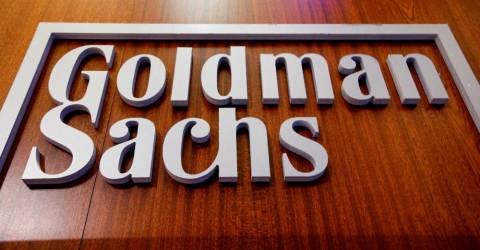
NEW YORK: Goldman Sachs’ third-quarter profit dropped less than expected as a nascent recovery in dealmaking offset an US$864 million (RM4.09 billion) writedown related to its GreenSky fintech business and real estate investments.
Wall Street executives are more hopeful of a recovery in capital markets activities after dealmaking came to a near halt in 2022 in the wake of increased geopolitical risk following the war in Ukraine and the Federal Reserve’s aggressive monetary tightening.
Goldman Sachs chief executive David Solomon said he expects continued recovery in both capital markets and strategic activity such as mergers and acquisitions.
“The work we’re doing now provides us a much stronger platform for 2024,“ he said.
Goldman Sachs’ net profit slumped 33% to US$2.06 billion, or US$5.47 per share, it said on Tuesday (Oct 17). Analysts on average had expected a profit of US$5.31 per share, according to LSEG data.
“It was a noisy quarter, but we believe exiting GreenSky was a good decision,” said David Konrad, analyst at Keefe, Bruyette & Woods in a note.
Goldman was an underwriter for high-profile initial public offerings (IPOs) in September, including SoftBank Group’s chip designer Arm Holdings and grocery delivery app Instacart.
The share sales sparked optimism about a recovery in the IPO market, but poor performance after debuts, and the lukewarm reception to German sandal maker Birkenstock, have raised doubts about the strength of the market.
Goldman’s investment banking fees of US$1.55 billion were largely unchanged in the third quarter after declining by a fifth in the second quarter from a year earlier.
Equity underwriting revenue in the third-quarter jumped 26% from a year earlier, while debt underwriting climbed 27%.
Goldman saw weakness in fixed income instruments, currencies, and commodities (FICC), with net revenue down 6%. FICC results from other banks were mixed with Bank of America up 6% and JPMorgan up 1%.
Goldman’s ill-fated foray into consumer banking, which has lost US$3 billion over three years, continued to weigh.
The bank took a US$506 million writedown on GreenSky, which facilitates home improvement loans for consumers and was sold to a consortium of investment firms led by Sixth Street Partners.
It was bought for US$1.7 billion last year although it was valued at US$2.2 billion when the deal was first announced in 2021. Goldman took a charge of US$504 million on GreenSky in the second quarter.
“I’m happy that we pivoted,” said Solomon about the retreat in consumer banking. “With hindsight, you will do certain things differently. We obviously reflect. We learn from the things that we do.”
Real estate investments were another drag on earnings as the bank booked an impairment charge of US$358 million compared with US$485 million in the second quarter.
That weighed on revenue from its asset and wealth management unit, which slipped 20% to US$3.23 billion.
“Going forward, Goldman Sachs will likely face less headwinds from severance costs, CRE impairments and consumer loan exits,” said David Fanger, a senior vice president at rating agency Moody’s Investors Service.
Commercial real estate loans, which have emerged as a risk for banks as interest rates rise, accounted for 14% of Goldman’s total loan portfolio.
Separately, Bank of America’s third-quarter profit beat Wall Street estimates as it joined other big lenders in earning more on loan interest payments, while also benefiting from a better-than-expected performance in investment banking and trading.
The second-largest US lender said the national economy and consumer spending on travel and goods were slowing but remained resilient despite rising interest rates. The bank warned that the macroeconomic outlook was uncertain and corporations continue to hold back on deals.
“Our team of economists predicts a soft landing, with a trough in the middle of next year,” CEO Brian Moynihan told analysts.
BofA’s profit climbed 10% to US$7.8 billion, or 90 cents per share, beating analysts’ expectations of 82 cents, according to IBES data from LSEG.
Consumer banking revenue increased 6% year-on-year to US$10.5 billion, while customer spending on debit and credit cards grew 3%. – Reuters





